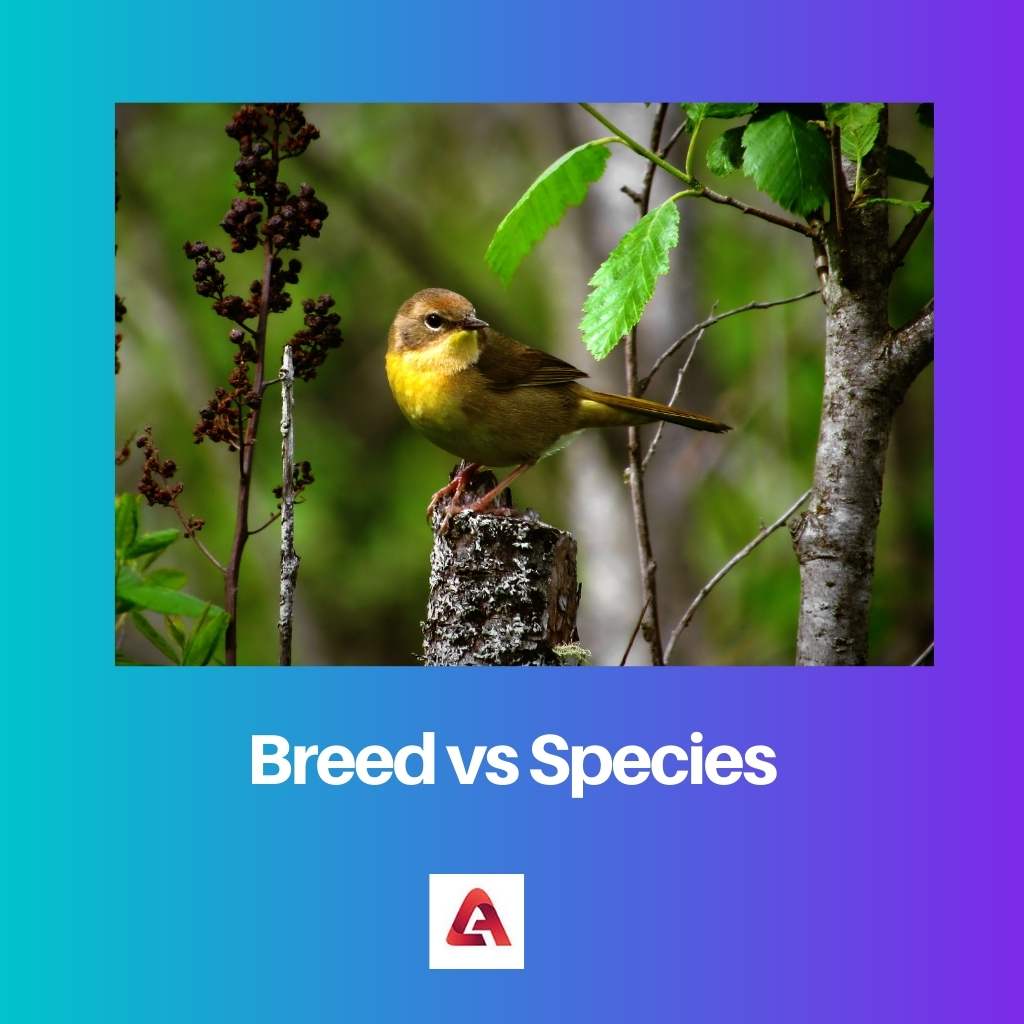Earth is the ultimate source of living for thousands of life forms. Life forms have evolved drastically through the years. Plants, animals, birds, and humans are the basic life forms that reside on the planet.
Each of them has different races and types of their own, which they are categorised into. These categorisations given to them based on some similarity or the other are known as Breed and Species.
Key Takeaways
- Breeds are different variations within a species, developed through selective breeding to enhance specific traits, such as size or coat color in dogs.
- Species are unique groups of organisms that can interbreed and produce fertile offspring, with each species sharing common genetic and physical characteristics.
- Breeding focuses on improving or maintaining specific traits, while conservation efforts aim to preserve the genetic diversity of various species.
Breed vs Species
The difference between Breed and Species is that Breed is a group of animals that belong to the same species but have distinctive features, whereas, Species is a group of animals having similar features and breed to develop offspring of their own. The categorization is done based on physical features, food habits, adaptive mechanisms, location etc. A species consists of organisms that belong to various breeds.

A breed is a unit of classification which is done among individuals having distinctive characteristics but homogenous appearance. Generally, domestic animals are grouped under this category.
Selective genes are the basis of the production of a breed. The organisms are artificially selected and cannot mate naturally to produce offspring.
On the other hand, a Species is a unit of classification which is done based on an individual or a group of individuals having similar characteristics. Plants, animals and microorganisms are grouped under this category.
It consists of varieties of breeds under it. The individuals are selected naturally and are capable of natural reproduction to produce offspring.
Comparison Table
| Parameters of Comparison | Breed | Species |
|---|---|---|
| Definition | When individuals of the same species have the same appearance, it is called a breed. | A group of individuals having common characteristics is called a species. |
| Composed of | It is composed of domestic animals. | It is composed of plants, animals and microorganisms. |
| Size | It is smaller in comparison. | It is larger with several breeds. |
| Subdivision | No subdivisions are there. | Subdivisions are present. |
| Selection | Artificial methods are used for selection. | They are naturally selected. |
| Offspring | Offspring is produced through artificial breeding. | The individuals are naturally capable of producing offspring. |
| Variations | They have a lower number of variations in comparison. | They have a higher number of variations. |
What is Breed?
When the individuals having homogenous features are brought together, it is called a Breed. Different types of breeds belong to a particular species.
A breed is produced by artificial means, i.e. selective genes. Breeding is done to produce domestic animals.
Individuals that belong to the same breed have similarities in terms of their appearance, behaviour, characteristics etc. These features distinguish one breed from the other that are classified under the same species.
Breeding is prominently used for agriculture and animal husbandry. However, scientifically, the term has several definitions.
Methods such as genetic isolation, natural adaptation or selective breeding are used to produce various breeds. Therefore, consistency is important in a breed so that mating is carried out successfully to produce a similar kind of offspring.
When two individuals are bred together, the offspring produced contains similar traits as of parents, called breeding true.
The breed traits are passed from generation to generation. This is why individuals belonging to the same breed have so much in common with their foundation animal.
However, genetic faults or defects do sometimes occur, which result in inconsistency among breeds.

What is Species?
When individuals having similar characteristics capable of producing offspring with each other are brought together, it is called a Species.
The primary feature of a species is to be able to exchange genes with each other. This is termed Gene flow. The name of a species is composed of two parts: a generic name and a specific name.
A species contains individuals that come from various breeds.
Sometimes, the dissimilar organisms of a particular species get separated due to physical, behavioural and reproductive changes, which result in Speciation, i.e. new individuals having a distinctive feature from the existing species appear.
Species is otherwise known as the basic unit of classification. It has the largest bunch of individuals grouped under it. This gives rise to unclear boundaries between species that are closely related.
Plants, animals and microorganisms that are grouped under different species may have a few similarities or relations with other species as well.
Sub-divisions of species also exist, known as sub-species or microspecies. This results in deviations from the definitions sometimes. There is no specific definition for the term ‘species’ that applies to all types of organisms.
Asexual reproduction, Hybridization, Breeding issues and Ring species are the factors affecting the identification of a species.

Main Differences Between Breed and Species
- A breed has a homogenous appearance within a species, while a species has similar characteristics.
- A species is comprised of all types of organisms, while a breed is comprised of domestic animals only.
- Species is larger in comparison to breed.
- Breeds are selected through artificial methods, while species are selected naturally.
- A breed has comparatively low variations than that of a species.
- Subdivisions of a species exist, while there is no subdivision of a breed.
- Organisms of a species are capable of mating naturally and producing offspring. But in breeds, artificial breeding methods are used for developing offspring.




